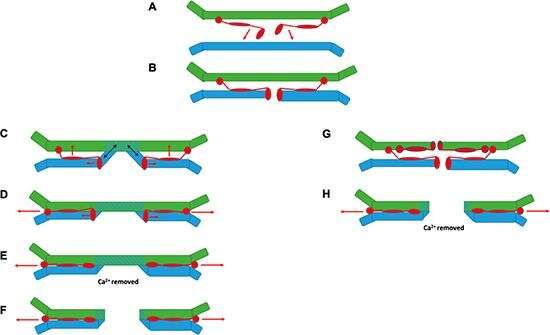A new understanding of how COVID infects humans

The Australian Nuclear Science and Technology Organisation’s National Deuteration Facility has provided deuterated cholesterol for international research to gain a better understanding of how the Spike protein of the COVID virus, SARS-Co-V-2, infects human cells through a membrane fusion mechanism.
In deuterated compounds, hydrogen has been replaced by deuterium. Deuterated cholesterol can be used as a molecular probe to determine the stacking order of membrane layers and to determine how cholesterol is partitioned on the membrane.
Researchers from the Institut Laue-Langevin, the University of Cambridge and the Italian National Research Council have elucidated how fusion peptides, short protein sequences, initiate infection with COVID using a model of membrane interactions.
The peptides act as a bridge between the host membrane and viral envelope to promote fusion.
A critical stage in infection occurs when the Spike protein envelope of the SARS-CoV-2 coronavirus fuses with the membrane of the host cell to create a pathway for the virus to enter.
The research provided a detailed picture of the role of specific SARS-Co-V-2 Spike fusion peptides in the fusion process in a paper in The Journal of the American Chemical Society. Because of its significance, the research was featured on the cover of the journal.
As well as clarifying two prospective molecular mechanisms, they found that both calcium and cholesterol influenced interactions between the peptides and the host cell membrane.
The team of researchers used a suite of neutron analysis techniques, including neutron reflectometry and small-angle neutron scattering, to be able to distinguish between layers of the viral and host membranes and other neutron techniques to understand dynamic changes to the membranes.
Cholesterol was a key component of the cell membrane model and critical in its function in the study.
“The deuterated cholesterol layer provided contrast that could be distinguished from the other layer components,” explained Dr. Robert Russell.
They found that presence or absence of calcium could affect the orientation of the cholesterol molecule, causing it to become thicker or thinner.
“The National Deuteration Facility is gaining an international reputation for the provision of highly deuterated lipids, such as cholesterol, for biomedical research. We have several international collaborations supporting COVID research,” said Dr. Tamim Darwish.
“Our facility can produce relatively large quantities, that are generally needed in neutron experiments, and we keep them in stock.
“Although the neutron scattering associated with this research was carried out at Institut Laue- Langevin in France, many of our users choose to come to ANSTO to use our neutron scattering instruments because they can easily access the bespoke deuterated compounds from the NDF.”
ANSTO’s National Deuteration Facility is Australia’s only molecular deuteration facility, which is partly funded by the National Collaborative Research Infrastructure Strategy (NCRIS)—an initiative of the Australian Government.
Neutrons produce first direct 3-D maps of water during cell membrane fusion
Andreas Santamaria et al, Strikingly Different Roles of SARS-CoV-2 Fusion Peptides Uncovered by Neutron Scattering, Journal of the American Chemical Society (2022). DOI: 10.1021/jacs.1c09856
Citation:
A new understanding of how COVID infects humans (2022, April 15)
retrieved 15 April 2022
from https://phys.org/news/2022-04-covid-infects-humans.html
This document is subject to copyright. Apart from any fair dealing for the purpose of private study or research, no
part may be reproduced without the written permission. The content is provided for information purposes only.
For all the latest Science News Click Here
For the latest news and updates, follow us on Google News.

